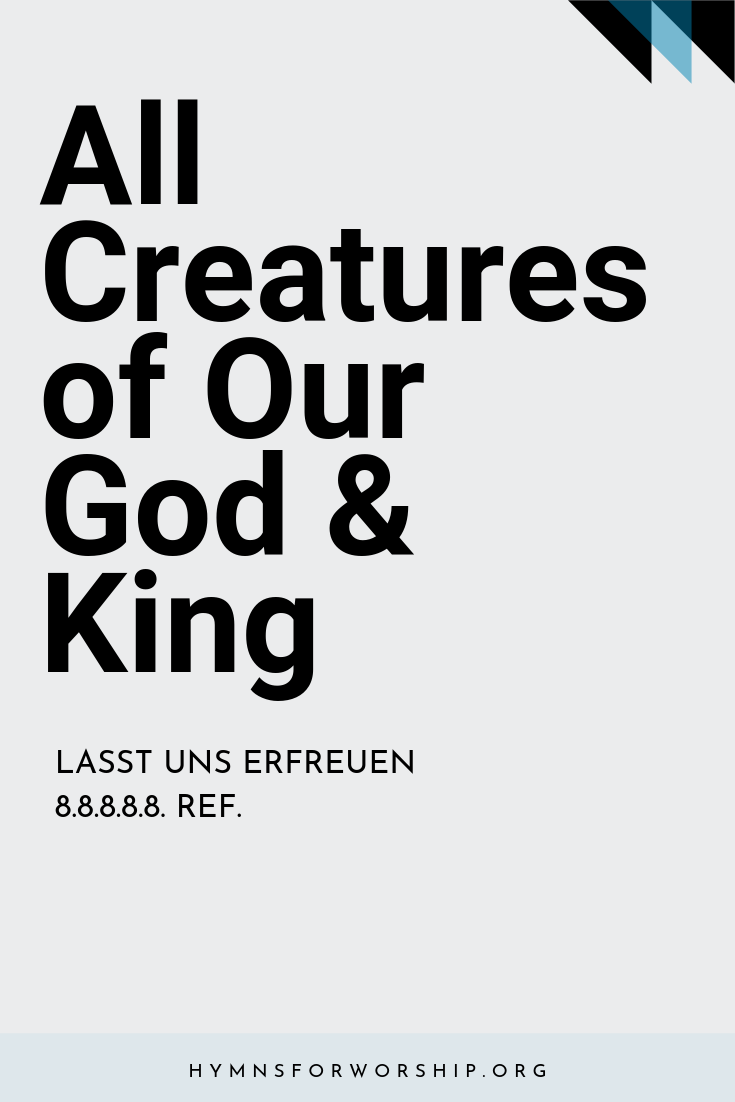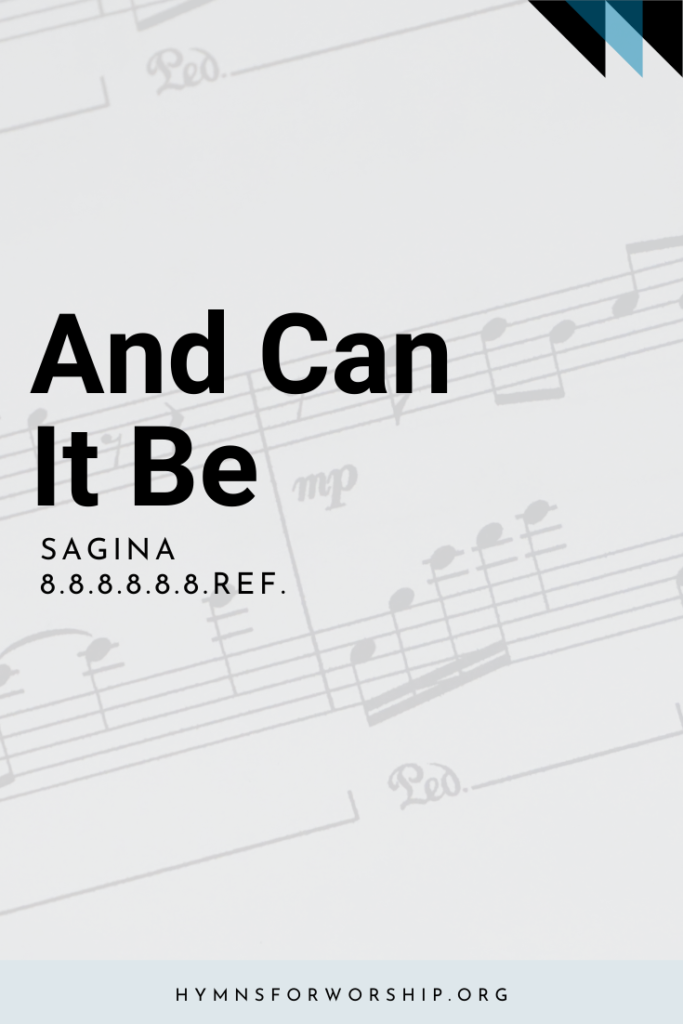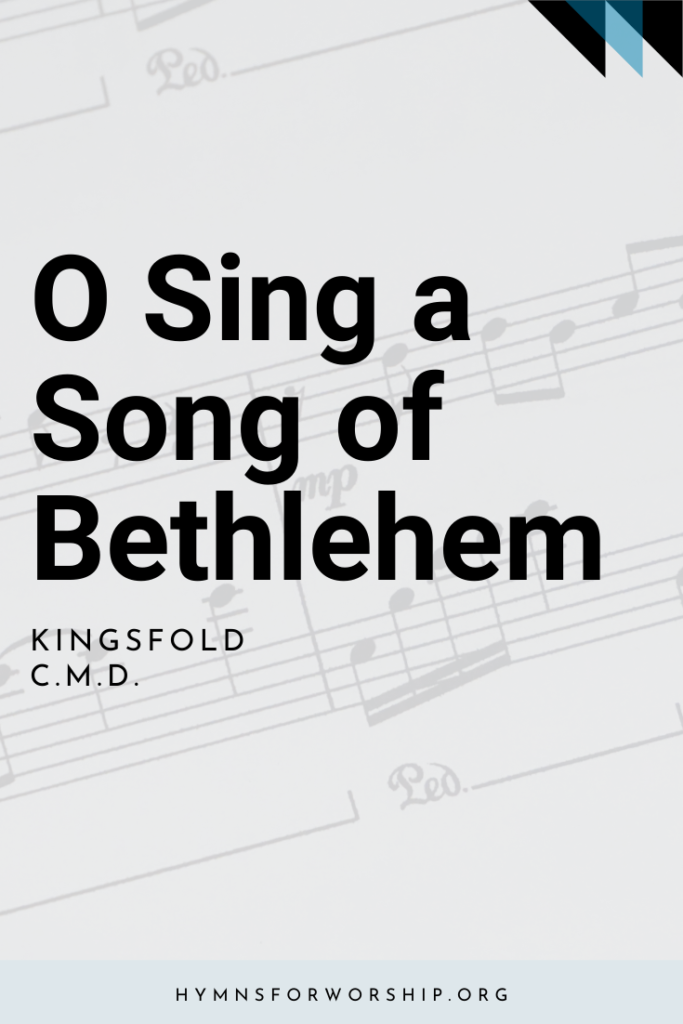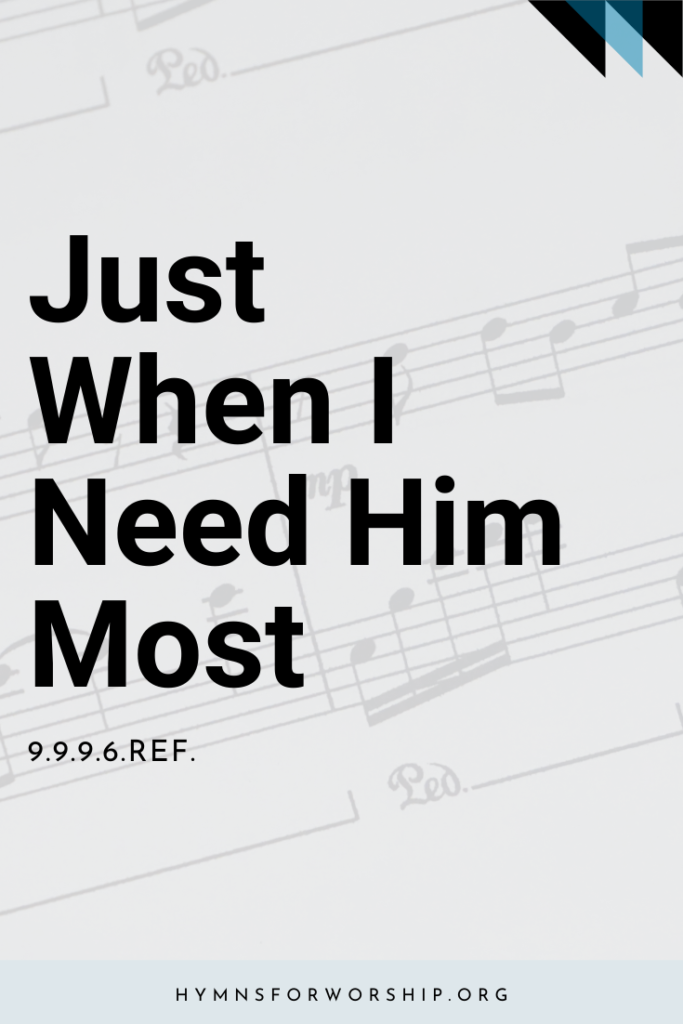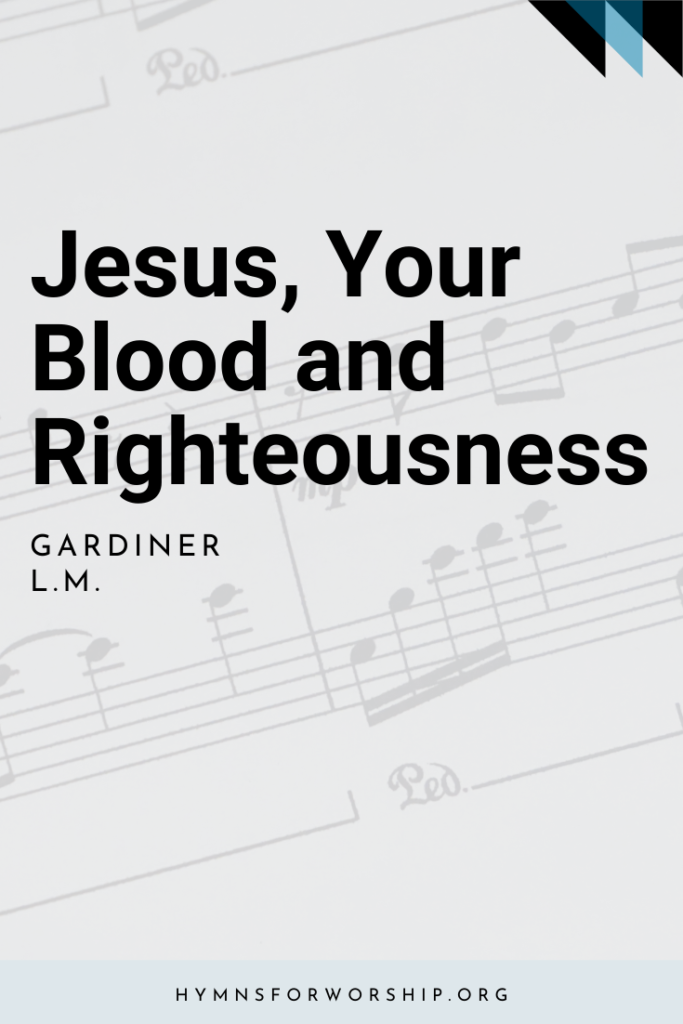WORSHIP >> ADORATION & PRAISE
SDAH 2
All creatures of our God and King
Lift up your voice and with us sing,
Alleluia! Alleluia!
O burning sun with golden beam
And silver moon with softer gleam!
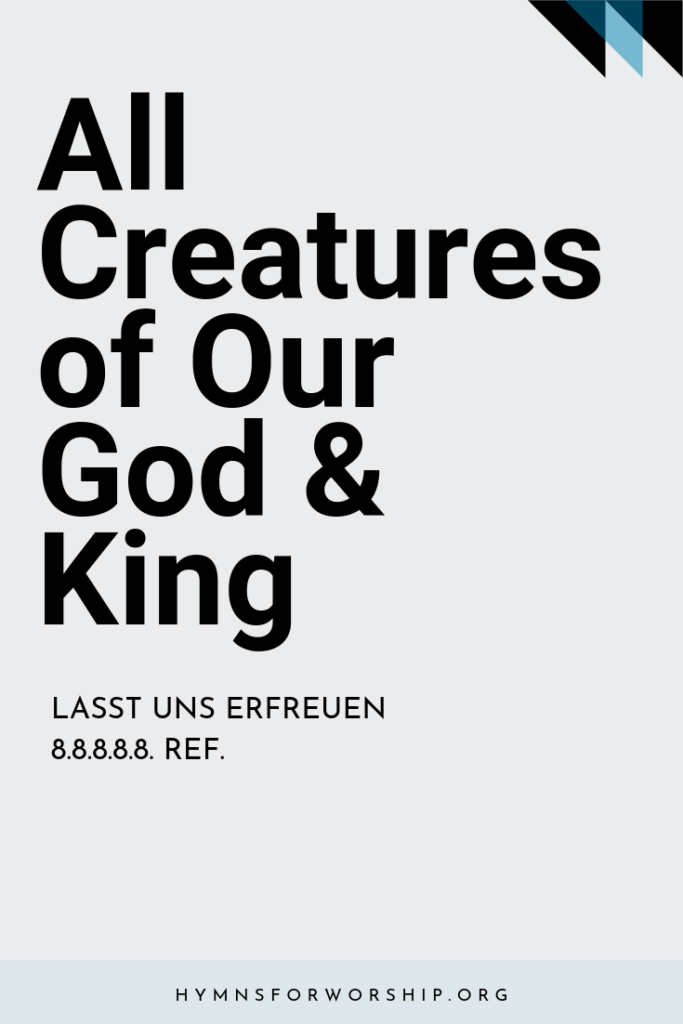
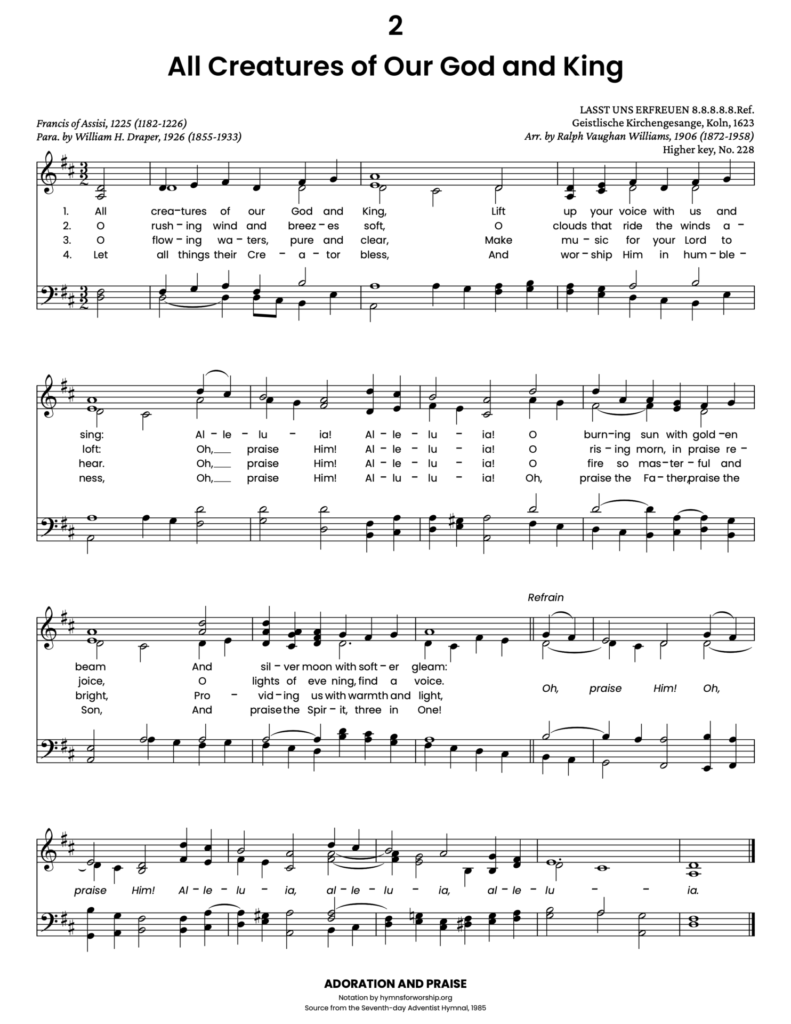
Get the hymn sheet in other keys here
For Worship Leaders
Make each hymn more meaningful with these helpful tools: Short, ready-to-use hymn introductions for church bulletins, multiple ways to introduce a hymn based on your worship theme and in-depth history and insights to enrich your song service.
Hymn Spotlight: All Creatures of Our God and King
Few hymns capture the majesty of creation’s praise like All Creatures of Our God and King. Adapted in the early 1900s by Anglican clergyman William Henry Draper, this beloved hymn is a free paraphrase of the Canticle of the Sun, written by Saint Francis of Assisi near the end of his life. Though suffering from blindness and illness, Saint Francis composed a masterpiece of worship, calling on all of creation—sun, moon, wind, fire, and earth—to join in praising God. His deep love for nature reflected his life of humility, joy, and service to the poor.
Draper’s version of the hymn was originally written for a Whitsuntide Festival for schoolchildren in England. The soaring melody, LASST UNS ERFREUEN, dates back to a 1623 German hymn and was later arranged by Ralph Vaughan Williams. Its powerful repetition and rising phrases build a sense of joyful adoration, mirroring the hymn’s call to “lift up your voice and with us sing, Alleluia!”
As we sing today, may we be reminded that all of creation—both great and small—exists to glorify its Creator. Let our voices join in the eternal song of praise!


Text
1
All creatures of our God and King
Lift up your voice and with us sing,
Alleluia! Alleluia!
O burning sun with golden beam
And silver moon with softer gleam!
Refrain
O praise Him! O praise Him!
Alleluia! Alleluia! Alleluia!
2
O rushing wind and breezes soft,
O clouds that ride the winds aloft,
O praise Him! Alleluia!
O rising morn, in praise rejoice,
O lights of evening, find a voice!
3
O flowing waters, pure and clear,
Make music for your Lord to hear,
O praise Him! Alleluia!
O fire so masterful and bright,
Providing us with warmth and light.
4
Let all things their Creator bless,
And worship Him in humbleness,
O praise Him! Alleluia!
Oh, praise the Father, praise the Son,
And praise the Spirit, three in One!

Hymn Info
Biblical Reference
(a) Psalm 150:6, 148:3 (b) Psalm 148:8
Author
Francis of Assisi (1182-1226)
Paraphrase
William H. Draper (1855-1933)
Year Published
1225
Performance Suggestions
Unison
Copyright
Words copyright by J. Curwen & Sons, Ltd., Used by permission of G. Schirmer, Inc. Music from ‘The English Hymnal.’ Used by permission of Oxford University Press.
Hymn Tune
LASST UNS ERFREUEN
Metrical Number
8.8.8.8.8.Ref.
Arranger
Ralph Vaughan Williams, 1906 (1872-1958)
Tune Source
Geistliche Kirchengesange, Koln, 1623
Year Composed
1623; Arr. 1906
Alternate Key
SDAH 228
Theme
ADORATION & PRAISE

